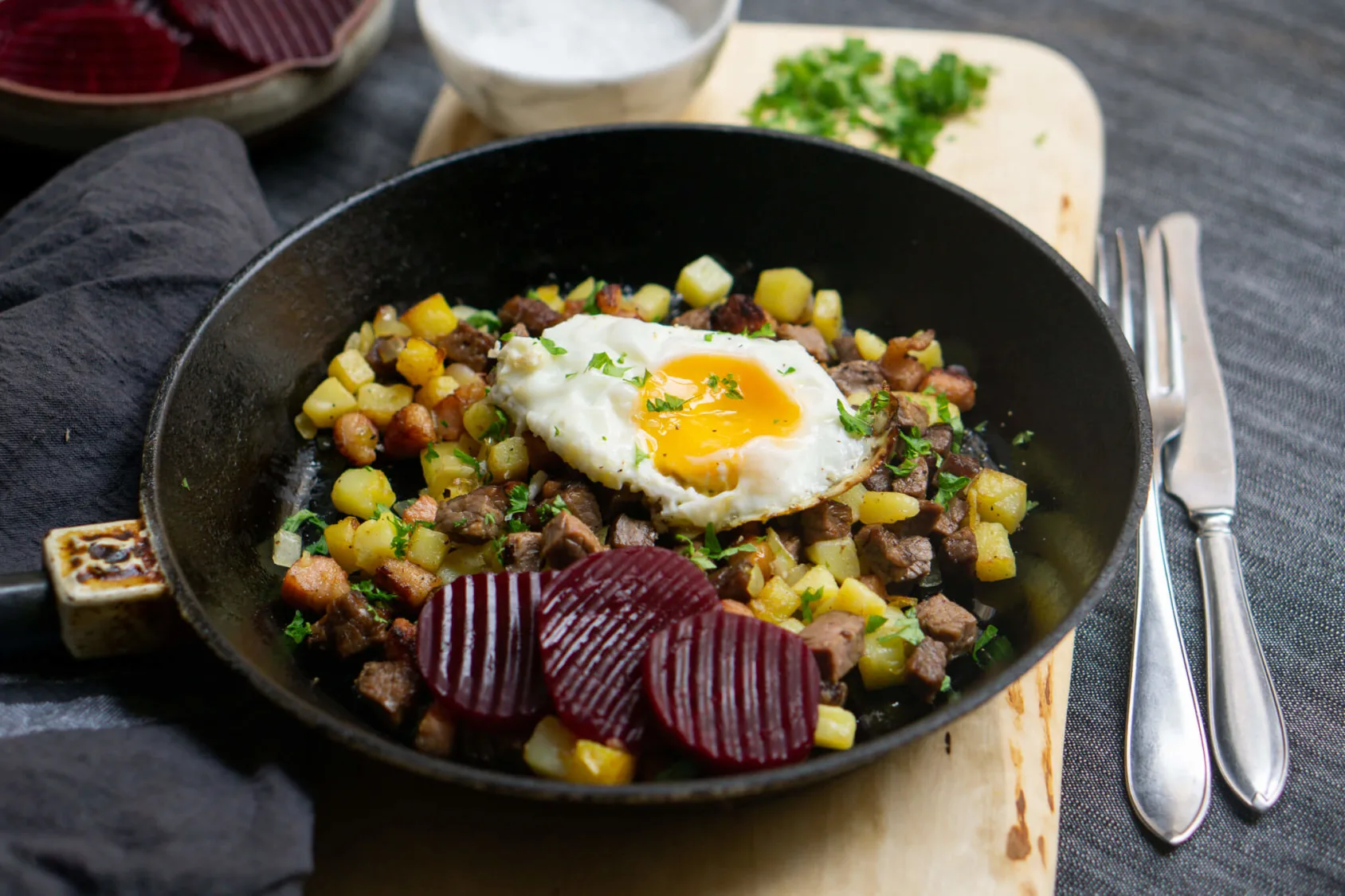
Pyttipanna
Swedish hash made with diced potatoes, onions, and meat, topped with a fried egg.
Ingredients
- •Potatoes
- •Onions
- •Leftover meat
- •Butter
- •Eggs
- •Pickled beetroot
- •Salt
- •Black pepper
- •Parsley
Instructions
Dice Ingredients
Cut potatoes, meat, and onions into small cubes
Fry Base
Fry potatoes until golden
Add Components
Add meat and onions, cook until heated through
Finish
Top with fried egg and serve with pickled beetroot
Pyttipanna is a beloved Swedish comfort food that exemplifies the country's practical and delicious approach to cooking. This hearty hash dish, whose name roughly translates to "small pieces in a pan," is the ultimate solution for transforming leftover ingredients into a satisfying meal. At its core, it consists of diced potatoes, onions, and various meats, all fried together until golden brown and crispy, typically crowned with a perfectly fried egg.
Like many comfort foods, pyttipanna emerged from the need to avoid food waste, likely in the late 19th century. It became particularly popular during times of hardship when making the most of every ingredient was essential. The dish has since evolved from a simple way to use leftovers into a cherished recipe that many Swedes deliberately plan and prepare from fresh ingredients.
The secret to excellent pyttipanna lies in the size and uniformity of the dice - each piece should be roughly the same size to ensure even cooking. The potatoes should be crispy on the outside while remaining tender inside, and the onions should be caramelized to add sweetness. While traditionally made with leftover roast beef or ham, modern versions might include any type of meat or even vegetarian alternatives. The crowning glory is the fried egg on top, whose runny yolk creates a rich sauce when broken over the hot hash.
Contemporary variations of pyttipanna reflect changing tastes and dietary preferences. Some cooks add bell peppers or mushrooms for extra flavor and nutrition, while others create vegetarian versions using plant-based proteins. There's even a luxury version made with diced beef tenderloin, though purists might argue this defeats the original purpose of the dish.
In Sweden, pyttipanna is often served with pickled beetroot, whose tangy flavor cuts through the richness of the dish, and a side of pickled cucumbers. It's particularly popular as a late-night meal or a hearty breakfast, and you'll find it on menus in both humble diners and upscale restaurants. Many Swedes consider it the perfect hangover cure or after-ski meal.
From a nutritional standpoint, pyttipanna is quite filling and energy-dense. A typical serving contains around 500-600 calories, making it a substantial meal. It's rich in protein from the meat and egg, and carbohydrates from the potatoes. While not the lightest dish, it provides good fuel for active days. Those watching their fat intake might want to use less butter and opt for leaner meats. The dish is naturally gluten-free unless modified with additional ingredients, though those with specific dietary restrictions should always verify the ingredients used, particularly in restaurant settings.
